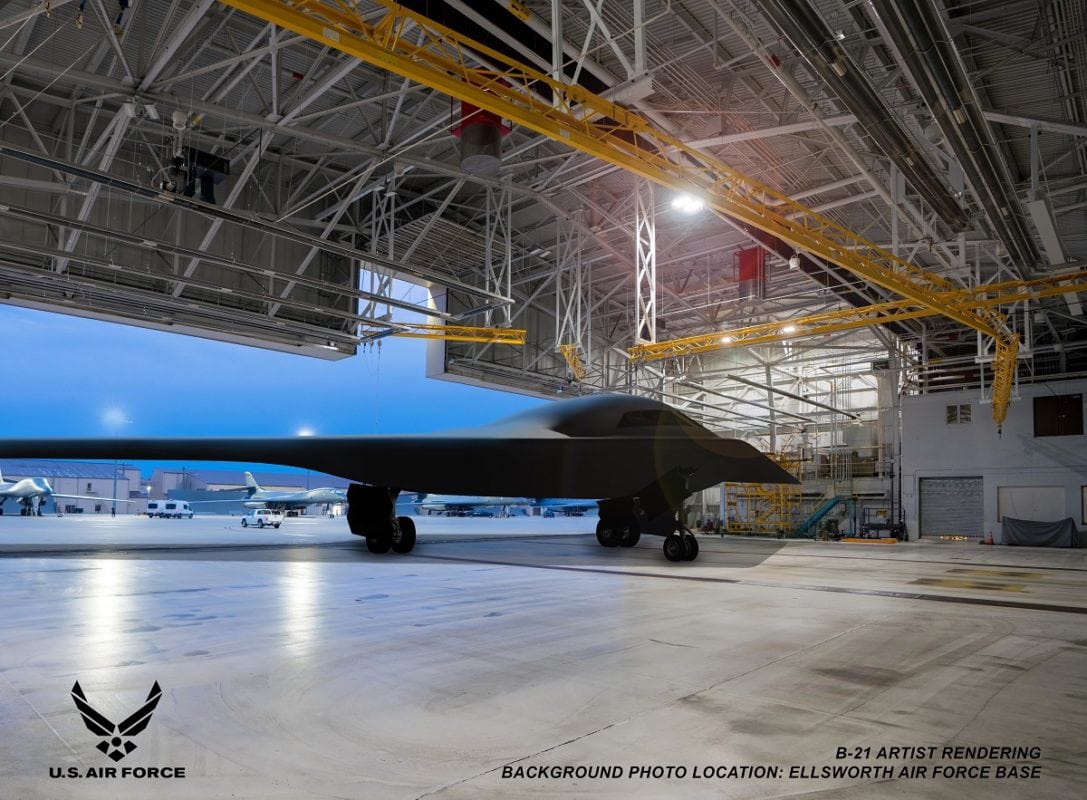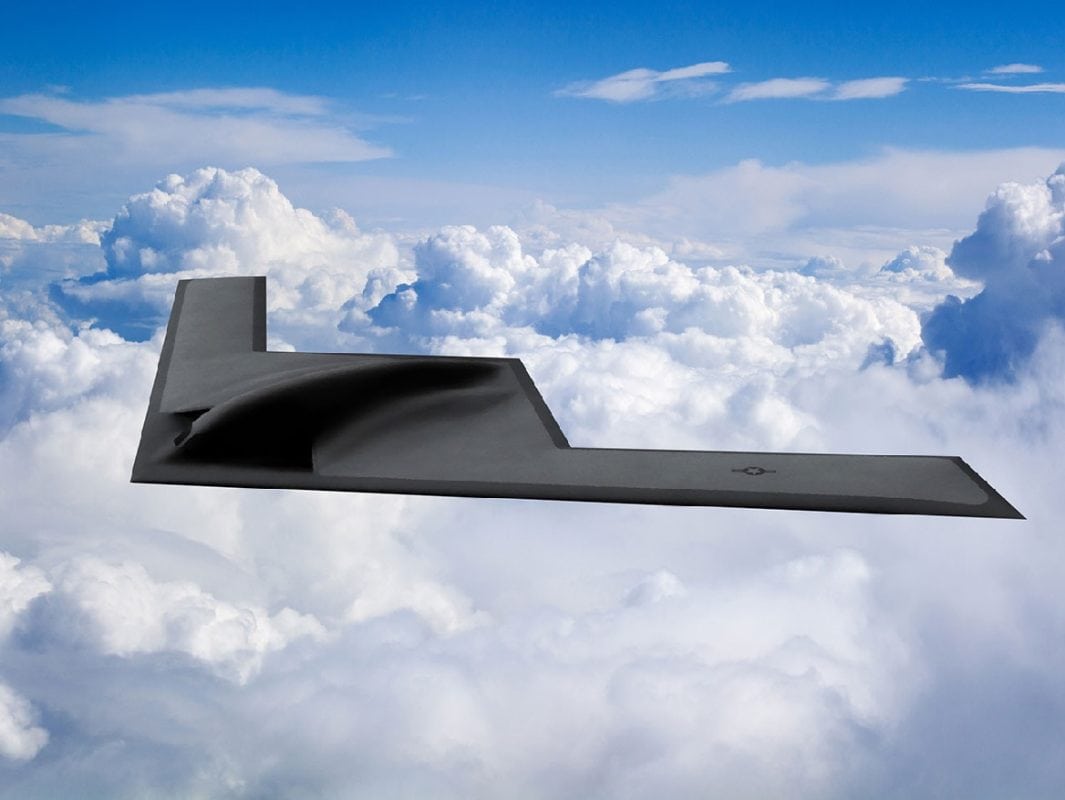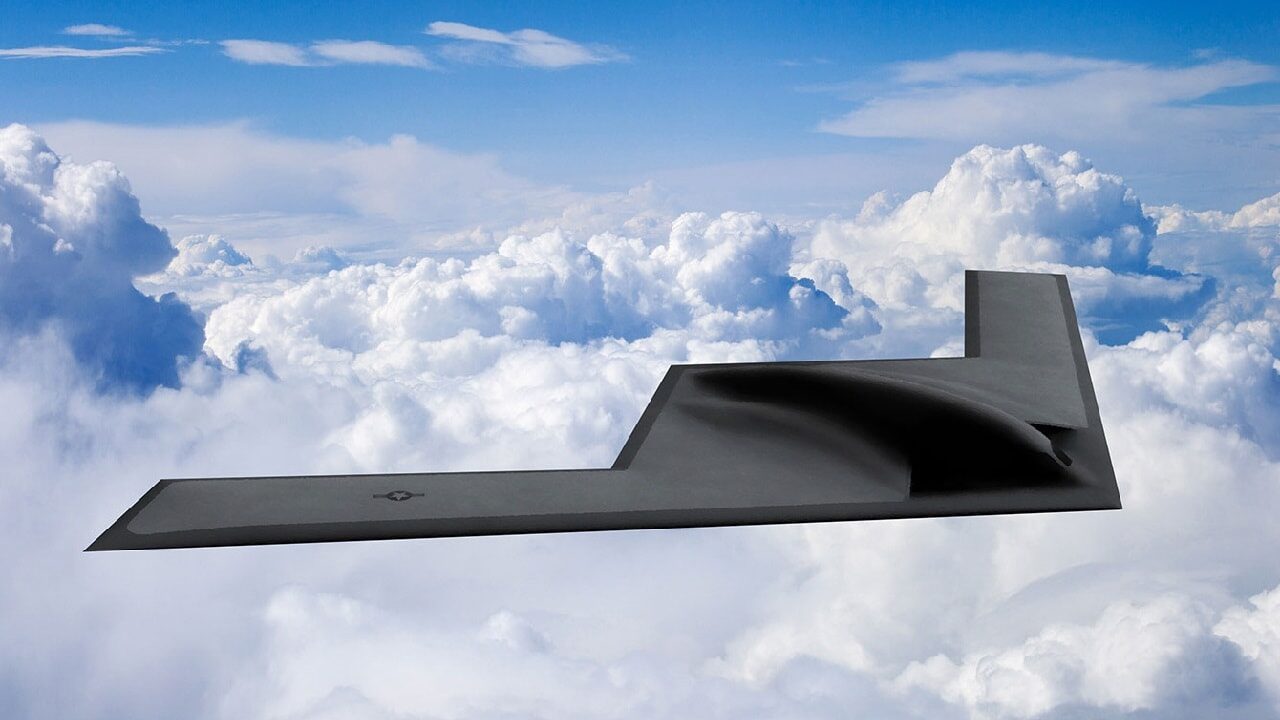B-21 Raider Stealth Bomber On Track for Mid-Year Flight: We could see the first flight of the long-awaited B-21 Raider stealth bomber later this year. When that happens, you are going to see a public relations bonanza because the U.S. Air Force has not upgraded its bomber fleet with a new airplane in more than 30 years. The B-21 is hitting its research and development milestones and five are in construction with Northrop Grumman as the prime contractor. Let’s take a look at why the Air Force is so excited, and China, well isn’t so happy these days.
Time For A New Bomber: Enter the B-21
The current U.S. bomber fleet is getting old. The B-21 should fit in neatly with the existing B-1 Lancer, B-2 Spirit, and B-52 Stratofortress.
The B-21 is expected to be ultra-long range and can carry a heavy nuclear-capable payload.
It will be a significant part of the American nuclear triad. The Air Force has been working with Northrop Grumman on the Long-Range Strike Bomber program since at least 2015. It was highly classified before that year, but the Air Force eventually revealed some details seven years ago. The B-21 life cycle goes back to 2004 as a concept hatched by the Next-Generation Bomber program. The branch wants to buy 100 B-21s.
B-21 Has Congressional Backing So Far
The B-21 appears to have support from the White House and Congress. In FY21, the program was funded for $2.84 billion. The FY22 proposed request by the Biden Administration was $2.98 billion.
Will It Be a Drone Too?
What’s interesting about the B-21 is that it can be flown by humans or potentially remotely as a drone, at least according to some reports. The Air Force is keeping mum on this capability as they don’t want the Russians, Chinese, North Koreans, or Iranians to gain information on its remotely-piloting status, but it lends much to the imagination. If the flying wing B-21 could be a drone, this gives it great strategic power that can deliver the goods in a contested environment without putting human pilots in danger.
B-21 First Flight This Year
The B-21 is scheduled for its first flight maybe as soon as this summer. This would be a demonstration mission from Northrop Grumman’s factory at Air Force Plant 42 in Palmdale, California, to Edwards Air Force Base. This would make it on schedule, which says a lot about how well the program is staying on time and on budget, even during the pandemic when work has been at least partially shut down and employees idled in the era of Covid-19.
It’s Going to Be Expensive
But what high expenditures this airplane is going to incur. Congress will have to dig deeper than the $3 billion a year already ear-marked for the program. To bring on a fleet of 100, it will take much more than that. Bloomberg said in November of last year that the cost to fly 100 Raiders over 30 years would be at least $203 billion.
Is this airplane worth it? One idea to help pay for it is the B-1 and B-2 would slowly be phased out and the savings from those bomber programs could be invested in the B-21. The current bomber force numbers 158 airplanes as of 2018. They have an average age of 42 years. So, it’s probably time for a new airplane.
B-21 Has Lots of Use Cases
While not much is known about the B-21 beyond its artist renderings, a highly-stealth bomber would fit nicely into Air Force strategy and tactics. It could launch from the United States and target China or Russia to take out command and control centers and air defense systems. It could backstop NATO efforts if the alliance is attacked – say by an incursion from Russia into the Baltics. It could be deployed on Guam with nuclear weapons to give China and North Korea second thoughts about a potential nuclear showdown in East Asia. It might even be able to launch hypersonic weapons. The B-21 is likely to be deployed out of Dyess Air Force Base, Texas; Whiteman Air Force Base, Missouri; and Ellsworth Air Force Base, South Dakota.

Earlier artist rendering.
Image: U.S. Air Force

B-21 Raider Stealth Bomber earlier artist rendering. Image: U.S. Air Force.
Can the Expenditures Be Consistent Each Fiscal Year?
While the first flight will be shown to the public by the Air Force, this is still a highly secretive program, and the branch has no plans on letting too many details out. But everything seems like it is going according to design if you as a taxpayer can stomach the cost and your Member of Congress continues to fund it every year. The B-21 has much going for it and should enter an important role in Air Force strategy and tactics into the 2030s and beyond.
Now serving as 1945’s Defense and National Security Editor, Brent M. Eastwood, PhD, is the author of Humans, Machines, and Data: Future Trends in Warfare. He is an Emerging Threats expert and former U.S. Army Infantry officer. You can follow him on Twitter @BMEastwood.

